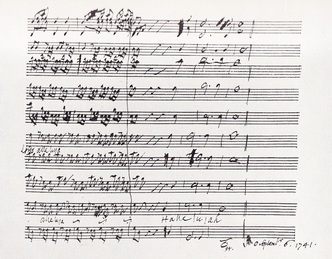Audiences traditionally stand at this point in the performance and there’s been a lot of rubbish written on the subject. Legend says that the tradition began because King George II was moved to stand when he first heard it, although there doesn’t seem to be any substance to this: he wasn’t there at Messiah‘s first performances in Dublin, and almost certainly wasn’t present at the London première either. To give a flavour of the mythology that has sprung up around these few short minutes of music, another legend claims that, when he wrote the chorus, Handel himself was so overcome that he saw a vision of God, but this doesn’t seem at all in keeping with Handel’s pragmatic character. It’s more likely that he finished Hallelujah and had a break for some beer and a pie. He certainly recognised its effectiveness and appeal though, as he recycled the chorus a few years later, including it at the end of an anthem he wrote for a charity fundraiser at Thomas Coram’s Foundling Hospital, Blessed are they that considereth the poor and needy.
Laying the myths aside, standing for “Hallelujah” brings the audience and choir together, and it is often an extremely moving moment for everyone; perhaps we can use it to imagine all humanity standing together, united in one peaceful act of praise and thanksgiving for everything that is good.
And Hallelujah isn’t the end of the story: as the last chord dies away, the trumpets, drums and chorus fall silent and into the stillness steps the soprano soloist to sing “I know that my Redeemer liveth”. Part 3 of Messiah tells us that hope and redemption, in whichever form they take, are not just a short burst of Hallelujah, but a continuing promise to humanity, and something to keep holding onto in troubled times.
We’re rehearsing all afternoon on 19 November in Durham Cathedral. The building is free to enter and open to all so do drop in to listen to us. We’ll sing Hallelujah at 2 p.m.

